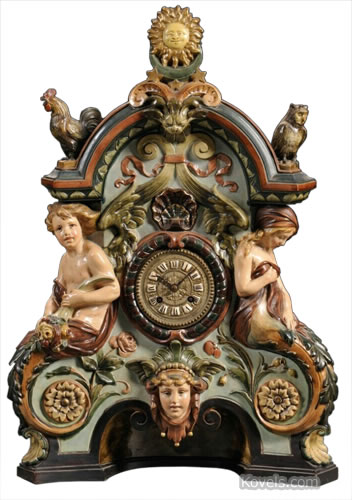We’re “springing forward” this weekend as Daylight Savings Time begins at 2:00 a.m. on March 10. Computers, tablets and smart phones adjust the time automatically. But if you have a vintage Mickey Mouse watch or an old clock like the one pictured here, you have to spring forward the old fashioned way—by hand.
Attempting to change complicated clocks and watches that have perpetual calendars, moon phases or date features can be tricky business. Care should be taken so that delicate mechanisms aren’t damaged. Antique clocks require a delicate touch. The only way an antique clock should be set is forward—think “spring forward, never back”—which makes spring the easier time to change an old clock. When it’s time to “fall back,” the safest way to change the time is just to stop the clock and then restart it an hour later.
This mantel clock sold for $1,230 at a Skinner auction. It has a cast brass dial with a French 8-day time and strike, spring-powered movement. The colorful case is German pottery and features draped figures, scrolls and flowers, with a sunburst at the top, an owl, and a rooster crowing cock-a-doodle-do.
Resetting clocks, both old and newer, is a minor inconvenience, but we think life looks a little brighter when it’s still light outside at 7:30 p.m.
Find prices of antique and vintage clocks and watches in the online price guide at Kovels.com.




Leave a Reply
You must be logged in to post a comment.